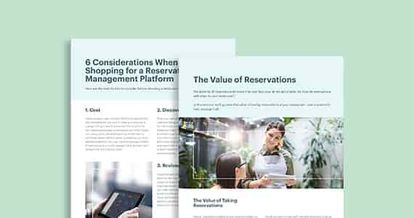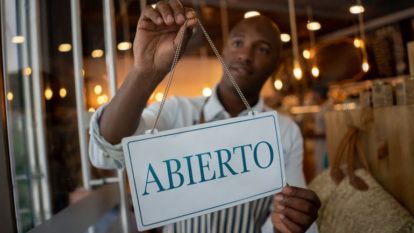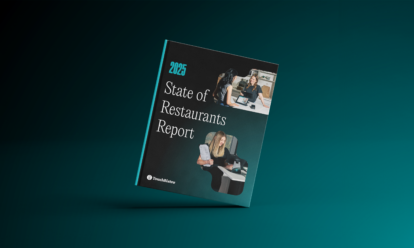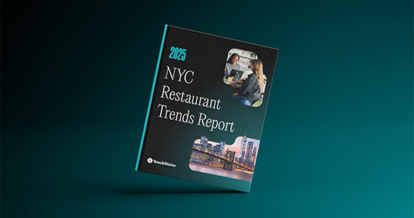Did you know poor restaurant cash flow management is one of the major reasons that foodservice businesses close down?
Social media is often abuzz with the cries of disappointed foodies when a seemingly successful restaurant suddenly closes its doors. “The food was great!” “They were so busy!” “Why?”
For many businesses, the answer to this lies in managing restaurant finances – managing cash is a different skill than creative cooking and gracious hospitality. Many entrepreneurs aren’t trained in accounting, which makes managing restaurant finances a massive stumbling block.
And yet, cash flow management is critical to success. A U.S. Bank study reports that 82% of business failures come down to this tricky accounting maneuver.
The basic concept seems simple: making sure that you’re bringing more money in than you’re spending – you definitely don’t want to be a restaurant losing money! But putting cash flow management into practice is complicated, and restaurateurs in particular are up against a host of factors that make this difficult.
In this article, we’ll take you through restaurant cash flow operating tips, prepare you for the roadblocks that get in the way, and provide some helpful tips that’ll help you get your books in the green – and keep them there!

What Is Cash Flow?
Cash flow is the amount of cash moving into and out of a business. You’ll also want to know operating cash flow, which is the amount of cash that your restaurant’s daily operations generate. This measure points to whether a company can generate enough positive cash flow to stay afloat and grow the business.
Calculating a restaurant’s income is simple – look at your food sales from customers. Unfortunately, there are a host of items to consider when adding up the sources of a restaurant’s expenses. Some of these expenses include:
- Rent/property costs
- Restaurant insurance
- Employee salaries
- Inventory costs
- Utilities
- Advertising/marketing
- Equipment
- Maintenance (equipment/facilities)
- Training
- Uniforms and linens
The early years of running a restaurant are full of uncertainty. There are many investments to be made into the business before it’s running at full speed and generating a decent income. This is why many small businesses fail in the first five years: They aren’t able to get over the hump of the initial cost outlays and get cash flowing to get them to the next step.
The difficulty is compounded when unforeseen costs come up that are beyond the initial budget numbers. This can happen when a piece of equipment unexpectedly needs to be repaired or replaced or utility rates or rent go up.
Many restaurateurs turn to a business loan or use credit cards to cover their start-up costs. While the injection of cash will help get things moving in the right direction, repayment (with interest) becomes another line item on the expenses list.
When starting out, expect your expenses to exceed your income. You need the space, equipment, staff, food, and marketing to get off the ground. The trick is to start turning a profit (any money that’s left over after accounting for all expenses) as soon and as sustainably as possible. That means frequent and steady business – and controlled spending.

Create a full financial forecast with our easy-to-use templates.
Cash Flow Management Tips for Your Restaurant
It’s understandable for most restaurant finances to start out in the red. Here are some of the top cash flow management tips to help you push past this state, become profitable, and – most importantly – stay that way.
Understand Your Numbers (Cash In and Cash Out)
Restaurant managers should have an easy line of sight to their restaurant finances. At the very least, you should start with a cash flow statement so you know how much money you’re bringing in every month and how much you’re spending. Keep your eyes on your reports to ensure you know these numbers exactly. For instance, do you know how much you’re spending in credit card fees each month?
Being aware of these figures will help you prevent a cash flow crisis before it starts.
Create a Reliable Cash Flow Forecast
Once you understand your numbers, you can create a cash flow forecast by predicting sales (based on performance over the last month, quarter or year) and upcoming bills (both regular operating expenses – like rent, salary, or food – and capital expenditures that happen infrequently, – such as buying new equipment maintenance or annual taxes).
After you have a few months under your belt, you’ll see patterns in the projection that will help with accuracy on your staff scheduling and inventory purchases. Some days will be slower than others, and in the busy times you’ll be making more profit. With a proper cash flow forecast, you’ll know when to expect those slower times and the best times to make a big purchase or invest in a marketing push.

Pay Attention to Profit & Loss
Your restaurant may be selling out every night, but if you’re spending more cash than you’re bringing in, you have a problem. Since sales happen every day, whereas expenses tend to trickle in over weeks and months, it’s tricky to truly know where you stand.
Enter a profit & loss statement – an accounting document that lays out your income and expenses so you can see your cash flows and business performance within a specific period of time, like a month or over a quarter. It provides a sightline to your cash flow and will empower you to make immediate and long-term business decisions, showing you exactly why you’re not bringing in enough.
While your first few profit & loss reports may uncover patterns you didn’t want to address, knowledge is power! Your profit and loss statement will tell you exactly how much to need to trim from your expenses and distributions to get back in the black.
You can also look at ways to get more business (and cash) coming in during slow times to get to a profitable place. You can’t change what you don’t know!
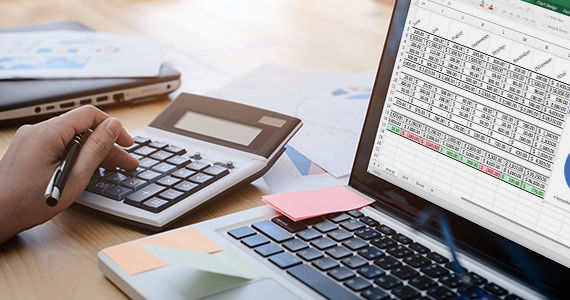
Use this customizable restaurant P&L template for Excel to analyze your operations, budget, and growth.
Make Quarterly Budgets
An annual budget is helpful, but a quarterly – or seasonal – budget is even better. Like any business, most restaurants are subject to seasonal fluctuations. You may be booked solid for reservations in December before the holiday break but completely dead in January when the celebrations have subsided.
A quarterly budget will help you stay focused on your restaurant finances in shorter bursts. Maybe your first quarter of the year sees less business, so you don’t invest in new uniforms or an expensive piece of equipment during that time. If you forecast that the summer months are busier, that may be the time to make big purchases. This will help keep you keep a steady operating cash flow.
Avoid Credit as Much as Possible
Most businesses need a boost from a bank loan to get started or turn to credit cards during lean times. However, relying too much on credit is a dangerous practice that can have a huge negative impact on cash flow. When you put everything on credit, your future profits will be directed to digging out of debt and a lot ends up wasted on interest. If you must use credit, pay it back as quickly as possible.
Set Aside Cash for Your Business When the Sun Is Shining
When your business is enjoying a nice profit, consider setting aside at least 20% so you have a cushion to fall back on during slow times. It’s also nice to have a nest egg so you can rely on your savings instead of leaning on credit if there’s an unexpected expense.
Make the Most of a Positive Cash Flow
If you find yourself in the green, look to your suppliers for a discount for early payment. If they’re not interested, hang onto your cash until the moment it’s due. While you’re waiting for due dates to roll around, look at interest-bearing bank accounts where you can earn a little extra cash. You won’t make a ton of extra dough, a little extra is better than none!
Get the Right Balance with Payroll
Is it worse to have too many staff or too few?
Either way, unbalanced payroll is a key contributor to poor cash flow. Consider hiring temporary staff for busy seasons and investing in a few great salaried employees to work year-round. Expect the restaurant manager to pitch in on slow nights when you keep staff on the floor and in the kitchen to a minimum.
Manage Your Inventory
Poor inventory management can take a huge bite out of profits and company cash flow.
It’s tedious work, but taking regular inventory can solve cash flow problems before they start. Identify over-ordered stock, which foods are most often wasted, or whether you have an in-house theft problem. It also pays to be looking at alternative vendors if food costs are too expensive, or work with the current vendors you have on pricing, so you can keep expenses down.
Some tips on keeping inventory tight include:
- Taking a look at inventory every day so you don’t run out of key supplies and overpay when having to make an emergency run to the grocery store
- Training kitchen staff to be watchful of measurements and ingredients to avoid waste
- Planning specials around ingredients that are on their way to spoil town if they aren’t used quickly. Challenge your staff to be creative by offering incentives for best use of stock!
Create a Cash Flow Forecast for Catering and Private Events
Catering or Hosting a Private Event? Get a Generous Deposit
Events can bring in a lot of money if they don’t cancel!
Don’t kill your operating cash flow with a canceled event. Get a deposit upfront so you know your staffing and food costs are covered well in advance. Set aside the deposit so cash flow isn’t affected if the client cancels within your grace period and you need to return some of it.
Not Catering or Hosting Private Events? Do It!
One way to improve cash flow, particularly during slow seasons, is to reallocate space and staff to special events. Offer up your restaurant to companies looking to host lunch ‘n’ learns, organizations planning networking or fundraising events, or host a creative event of your own, such as a wine tasting or cooking class.
Optimize Outgoing Payments
Once you have a handle on your restaurant’s cash flow forecasts, you can look at staggering payments so a number of them aren’t taken out at once.
Adjust outgoing payments to your vendors, suppliers, and payroll so your restaurant’s bank accounts aren’t taking a hit the same week.
Run Specials That Won’t Break the Bank
If business fluctuates in your restaurant, be imaginative to get your seats filled.
Offer a 2-for-1 promotion or an early bird special for people who live in the neighborhood. Look for ways to get the attention of diners by doubling down on marketing. Run a social media contest, invest in a new form of marketing you haven’t tried before (like print or radio?) or hire an agency to come up with a campaign.
When you get creative and conquer slower times, you’ll see an influx in restaurant cash, which is always a good place to be in!

Managing total cash flow isn’t easy, but it pays to develop good habits that keep your restaurant in the green. It’s important to constantly be looking for ways to keep income high and expenses low. That means investing in good accounting and POS systems and hiring people who are as committed to maintaining a positive operational cash flow as you are.
When you have a clear line of sight to exactly how much is coming in (and when) and you how much is going out (and when), you’re on your way to making smart financial decisions for your business – now and in the future.

Create a full financial forecast with our easy-to-use templates.
Download our free inventory template
Sign up for our free weekly TouchBistro Newsletter



